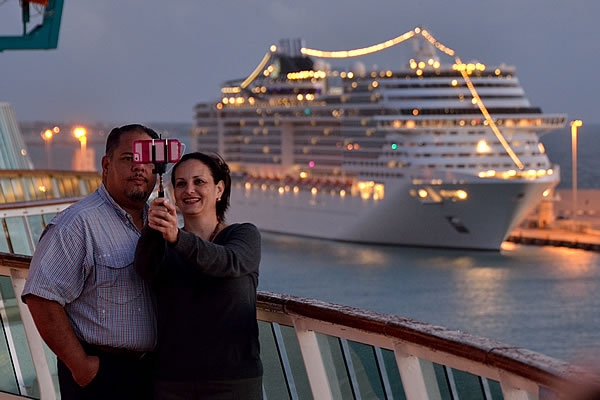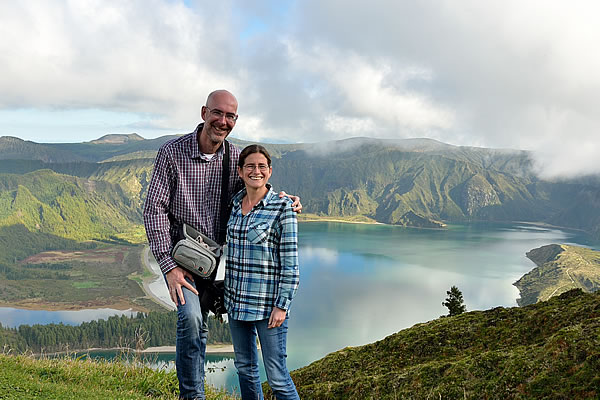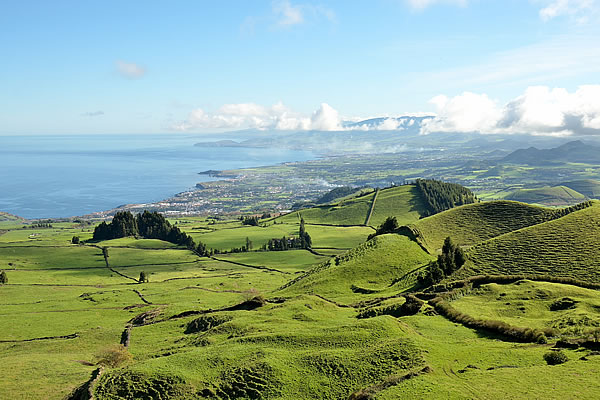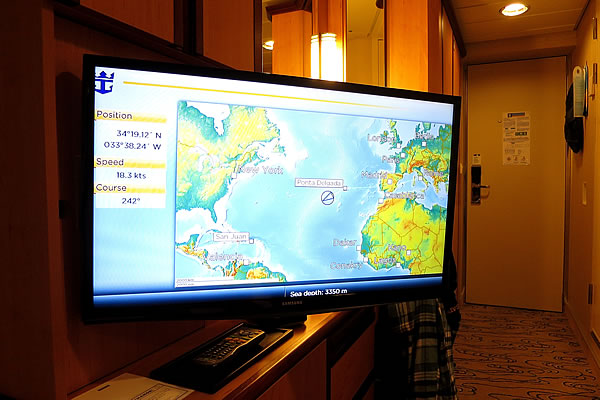

| Puerto Rico: stopover in the Caribbean | |
Rome (Italy) to Barranquitas (Puerto Rico), November 2016
|
|
|
|
|
It is early in the morning when we take the train from Termini station in Rome to Civitavecchia, the cruise port of the Italian capital. Today we embark a cruise ship for the 13-day Atlantic crossing to the Caribbean, to the Puerto Rican capital of San Juan, to be exact. It is the second time we cross the Atlantic Ocean by cruise ship, and it is in our opinion a great alternative for a transatlantic flight. And the prices are very reasonable if you can travel in the right season. Twice a year there is a cruise boat migration. In autumn, the ships go from the European waters to the Caribbean Sea for the winter season, and they come back again in spring for the European summer season. And because the ships have to go anyway, the cruise companies do everything to fill the cabins on board. Often for very interesting prices. The standard clichés of 'cruise boat travel' is partly true. Most cruise passengers are indeed somewhat older fellows, often obese or in some way disabled, and generally American. On the other hand, a cruise is a great way to unwind, take some time for reading, finish some unfinished work, and enjoy the food on board, which is generally very good and tasty. In addition, the facilities on board are fine. These include a theatre, a cinema, a fitness centre and a choice of swimming pools. Activities are also organized on board, often of course, aimed at the older cruisers. Think bingo, ballroom dancing, and courses in for example hand-knitting and towel folding. The boat stops at different ports. Usually it is only one day, so you do not get a lot of time to explore the destination. The cruise we made stopped for a day at Valencia, Lisbon and the Azores. |
|
 |
|
Fellow-cruise-travelers making a selfi in the harbour of Civitavecchia |
|
We especially liked the Azores, because we never visited the island group before. We had only one day, and therefore decided to hire a taxi to drive us around the main island of the Azores, named Sao Miguel. The landscape of the island is beautiful, and for that reason it is undoubtedly a very nice hiking destination. The towns, including the capital Ponta Delgada, are a little bit boring and not very special. Our taxi driver told us that nowadays, with the arrival of budget airline Ryanair, it has become much cheaper to fly to mainland Portugal. In addition, Ryanair seems to start in the spring of 2017 with direct flights from the Azores to London (UK) and Frankfurt (Germany). Visiting the Azores has thus become cheaper than ever before, and this will definitely lead to a tourism ‘boost’ in the years to come. From the Azores, it was five more full days at sea before we reached San Juan. Every day at sea the temperature and humidity increased. Several years ago, we also visited the Caribbean, but then for six months. We visited Cuba, Jamaica, Trinidad & Tobago and some smaller island states of the Lesser Antilles, including St. Lucia, Barbados, St. Vincent & the Grenadines and Grenada. Now the Caribbean is just a stepping stone for us on our way to Central America. We will stay three weeks in Puerto Rico, and then move on to Mexico. We also planned to visit the nearby island of Hispaniola, comprising the Dominican Republic and Haiti, but currently this is not the best time. Haiti has been hit hard in September by Hurricane Matthew, while the Dominican Republic will be flooded in mid-December by American tourists who want to escape the cold Christmas season in the US. So Hispaniola will remain on the wish list for a while. |
|
 |
|
A windy crossing of the Gibraltar Strait |
|
|
Puerto Rico as a real Latino destination, but with an American twist. The island is at heart Latin American, but because of the fact that Americans are in charge on the island since 1898, there are American influences, such as the love for American pickup trucks and fast food chains. But American music for example, is very rare. Since 1917, Puerto Ricans are, under the Jones Act, citizens of the United States. Puerto Ricans are entitled to live anywhere in the United States without a visa, and vice versa, US citizens can move to Puerto Rico without a visa. But Puerto Ricans are not represented in the US Congress and cannot vote for the US president. Puerto Rico is not really a backpack destination. Hostels are non-existent outside of San Juan, and public transport is very limited, because almost everyone in Puerto Rico has a car. Also this dependency on the car, in without doubt, taken over from the Americans. Therefore, we decided to rent a car to get the most out of our visit to this beautiful island. Puerto Rico is green, rough, friendly and above all Latin American. Officially, Spanish and English are the official languages, but English isn’t spoken that much outside the capital. The island is tourism-wise still underdeveloped. The capital, San Juan, gets a fair amount of tourists because of the fact that it is an important port of call for Caribbean cruises, but outside the capital, tourists are rare. And that makes the island an interesting destination. Puerto Rico is still a true Latin American destination with a North American sauce. |
|
 |
|
Us in front of Lagoa do Fogo (Azores) |
|
 |
|
Landscape of the Azores |
|
 |
|
TV in our cabin shows the ship's position between the Azores and San Juan |
|
 |
|
Colourful street in Old San Juan (Puerto Rico)
| |
 |
|
The endemic Puerto Rican Tody © copyright - Babakoto.eu / 2016 |
|